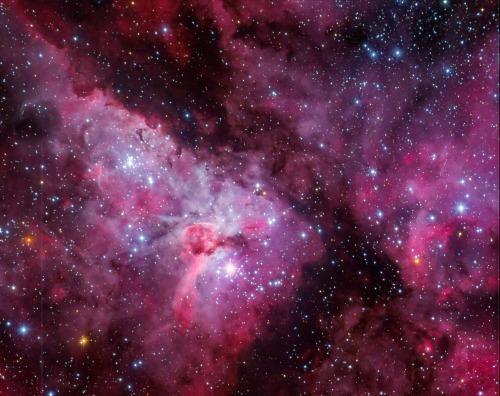My First Moon Shots


my first moon shots
More Posts from Chbnb and Others

Alignment of the Elements
calibreus
![A 2.5 Hour Exposure Of The Rho Ophiuchi Region From A Dark Sky Site [OC]](https://64.media.tumblr.com/1a5bff34ca113731e5f11b514c05a43b/ceae70b7e5f929a7-49/s500x750/bae71af47f92f5b6a94db6fcda8cf7a597bea482.jpg)
A 2.5 Hour Exposure of the Rho Ophiuchi Region From a Dark Sky Site [OC]

The Dark River to Antares : A dark river seems to flow through this sky from the horizon toward colorful clouds near red giant star Antares. Murky looking, the dark river is a dusty nebula obscuring background starlight near the central Milky Way, although the dark dust nebula contains mostly hydrogen molecular gas. Dust scattering starlight around Antares, alpha star of Scorpius, creates the unusual yellow-hued reflection nebula. Above it, bright blue double star Rho Ophiuchi is embedded in more typical dusty bluish reflection nebulae, with red emission nebulae also scattered through the interstellar space. Globular star cluster M4 looks almost like a bright star just above and right of Antares, though it lies far behind the colorful clouds, at a distance of some 7,000 light-years. The dark river itself is about 500 light years away. To create the startling night sky view, all background and foreground exposures were made back to back with the same camera and telephoto lens on the same night from the same location. In combination they produce a stunning image that reveals a range of brightness and color that your eye can’t quite perceive. Recorded in the early hours of January 31, the composite also captures Mars still near the eastern horizon and rising to join rival Antares on the celestial stage. Bright Mars and its watery reflection are left of a lonely tree in the Bosque del Apache National Wildlife Refuge, New Mexico, planet Earth. via NASA

M42, Heart of Orion

M104, Sombrero Galaxy

I gave a try at shooting the sky above my new house around Nice, France. That's a 10s exposure. Quite satisfied as light pollution is not as bad as what I thought.

The Great Carina Nebula

Milky Way at Lake Towerinning, Western Australia
Nikon d5500 - 50mm + Hoya Red Intensifier filter - ISO 3200 - f/2.5 - Foreground: 35 x 13 seconds - Sky: 81 x 30 seconds - iOptron SkyTracker
2022 May 29
Simulation TNG50: A Galaxy Cluster Forms Video Credit: IllustrisTNG Project; Visualization: Dylan Nelson (Max Planck Institute for Astrophysics) et al. Music: Symphony No. 5 (Ludwig van Beethoven), via YouTube Audio Library
Explanation: How do clusters of galaxies form? Since our universe moves too slowly to watch, faster-moving computer simulations are created to help find out. A recent effort is TNG50 from IllustrisTNG, an upgrade of the famous Illustris Simulation. The first part of the featured video tracks cosmic gas (mostly hydrogen) as it evolves into galaxies and galaxy clusters from the early universe to today, with brighter colors marking faster moving gas. As the universe matures, gas falls into gravitational wells, galaxies forms, galaxies spin, galaxies collide and merge, all while black holes form in galaxy centers and expel surrounding gas at high speeds. The second half of the video switches to tracking stars, showing a galaxy cluster coming together complete with tidal tails and stellar streams. The outflow from black holes in TNG50 is surprisingly complex and details are being compared with our real universe. Studying how gas coalesced in the early universe helps humanity better understand how our Earth, Sun, and Solar System originally formed.
∞ Source: apod.nasa.gov/apod/ap220529.html

